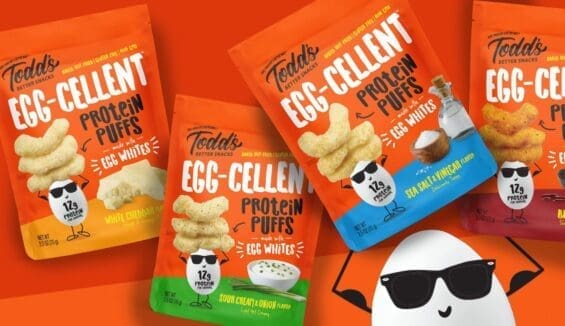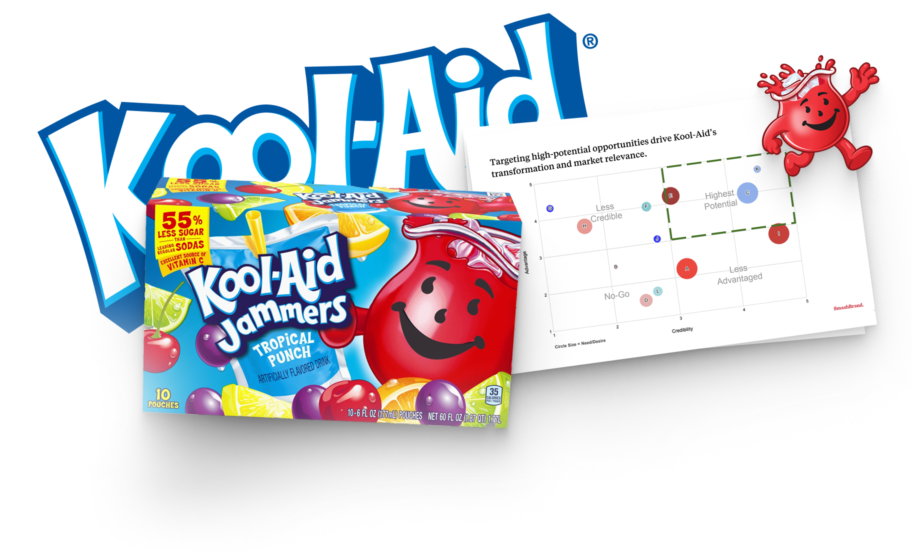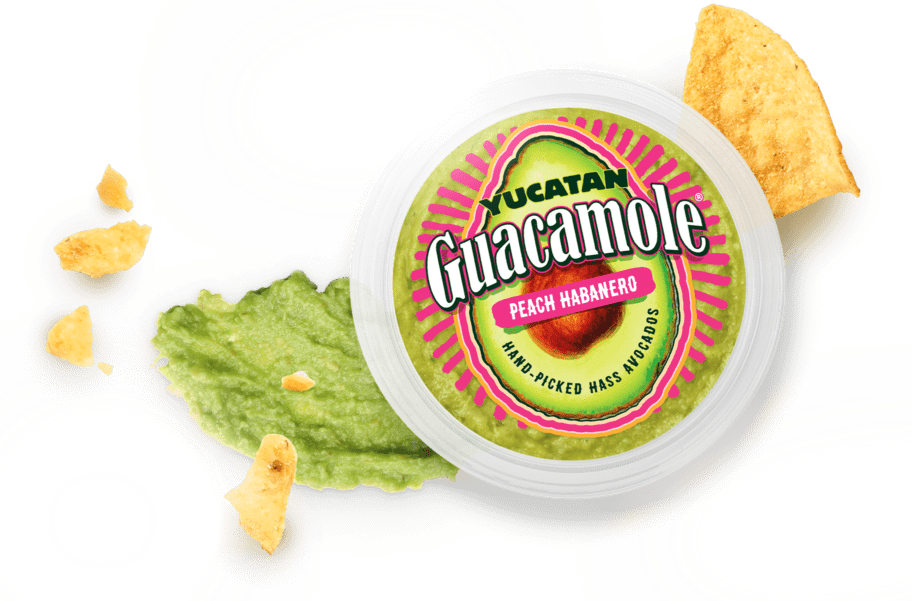Television episodes of mothers from the 1950s showcased women who had time on their hands. These women “appeared” to have a schedule allowing for full-course meals, casual conversations with a friend, and being the therapist of the family.
Then came a shift in which many women began working outside the home. They put children in daycare, and meals came pre-packaged, ready for microwave heating. Moms still cared for their children, but everything moved faster.
We have now entered the 2nd and 3rd generations of the two-household-income economy. Mothers now desire a professional life that allows them to be more present for their children. In recent years, their ambition to choose the healthiest & safest options within a product category has seen a significant increase.
A good graphic design isn’t enough to get the job done with the women of today. With this transition, careful consideration is needed when creating your packaging design for moms.
Make mom a superstar.
Across every generation and stage of childhood, one truth holds: moms want to feel confident in their choices. That’s why baby product packaging design should do more than inform; it should affirm. The right design conveys to her that this is an innovative and responsible purchase for her family.
For casual mama products, simplicity and clarity go a long way. When targeting moms, lead with messaging that reflects care, trust, and intention, both for the child and for the parent making the decision.
Even in categories like teen-focused items, packaging that signals “you’re doing the right thing” creates instant emotional alignment. Many brands for new moms succeed because their packaging makes the buyer feel seen, not sold to.
Need inspiration? Examine family packaging examples that strike a balance between emotional cues and functional clarity. They don’t just sell a product; they validate a parent’s decision.
Convenience matters to mom.
Modern moms want to feel like superstars, but not if it feels like a full-time job. In the healthy moms market, convenience is a core purchase driver, not a bonus feature.
When designing household product packaging, brands need to think beyond looks and focus on functionality. Easy-open lids, portion-ready packs, and portable formats make her daily routine simpler.
Understanding how to market to new parents means highlighting convenience without compromising quality or trust. The message should reassure her that she’s making a wise choice, not just a quick one.
As the marketing to the moms market size expands, emotional connection and ease of use will separate winning brands from the rest.
For on-the-go snacks and school lunches, thoughtful lunch box packaging design can make life smoother, helping moms feel like heroes every day.
Make your product packaging fun.
Healthy, safe, and convenient don’t have to mean dull. Modern moms want products that reflect their lifestyle, vibrant, smart, and full of energy. In food packaging design, color and creativity are essential for standing out in a competitive aisle.
The same is true for supplements packaging design, where playful graphics and modern fonts can transform clinical perception into consumer excitement. The goal is straightforward: to design packaging that draws attention without compromising clarity or trust.
During development, include visual elements that energize the design. When evaluating packaging design recommendations, test for boldness, contrast, and emotional pull.
In many aisles, plain white backgrounds and neutral tones dominate. A more daring color story or layered texture might be the edge you need in beverage packaging design to break through the noise and capture attention where it counts on the shelf.
Popular CPG Categories Where Moms Buy
Mothers evolve as quickly as their children do, and their purchasing mindset shifts with every stage of development. From baby food to teen snacks, your retail packaging must connect with her current reality, not just her child’s age.
In today’s marketplace, consistency matters more than ever. Effective omnichannel packaging design ensures your product looks and performs the same way online as it does in-store, maintaining recognition and trust across every touchpoint.
For brands in wellness or nutrition, thoughtful supplement packaging design helps communicate safety, credibility, and convenience—key purchase drivers for health-focused mothers.
When appealing to conscious consumers, packaging design for natural product lines should emphasize simplicity, sustainability, and ingredient transparency values that continue to define modern motherhood.
CPG Products For Babies
Safety and health are the biggest concerns of this category. Although busy with the 24-hour needs of their children, this stage is where many mothers are less distracted by professional obligations.
With the increase in paid leave, new mothers can take time to consider the products they buy for their babies. While convenience is essential, it may be more beneficial for this buyer profile to prioritize health and safety as the primary message. For example, Kendamil Classic ready feed is designed to provide both convenience and reassurance for busy mothers who want the best nutrition for their babies without compromise.
Of course, things change when you have a toddler at home who is dragged around everywhere you go. Even then, a singular focus on family keeps their intention to make the best decisions for their child’s health.
CPG Products for Toddlers
Babies need constant care. Toddlers demand constant energy. For moms in this stage, convenience and sanity go hand in hand. If your audience is shopping for a toddler, every element of your packaging should make her life easier—because that’s what she’s buying as much as the product itself.
When developing food packaging for toddlers, remember this is the “kids-fight-back” phase. Moms may want their little ones to crave broccoli, but toddlers want excitement, flavor, color, and fun. Winning brands bridge that gap.
Your packaging design should convey two key messages simultaneously: a reassuring sense of health for mom and an undeniable sense of enjoyment for her child. Demonstrate how your product makes mealtime smoother, tastier, and less stressful.
If your product doesn’t address that daily challenge, the real problem might not be the child; it might be your packaging.
CPG Products for Children
Unless homeschooling a child, this is the time when mothers have less influence on what they do and how they do it. Since a teacher has 30 kids to worry about rather than a few, moms are looking for products that are both safe and durable.
For consumable products, kid friendly packaging is an essential feature to market.
Squeeze-and-go packages are now widely recognized as examples of kid-friendly packaging. While it is now common, we assume that the first company to rake in the cash was the one that offered squeezable product packaging. Of course, that is only true if their messaging made it clear what problem this solved for busy moms.
Non-consumable products need to showcase their kid-friendly design, durability, and child safety features. Children are prone to not paying attention and being easily distracted. Mothers are looking for products that won’t break for both safety reasons and the cost of replacing the item.
CPG Products for Teenagers
Even as kids grow more independent, moms still hold the purchasing power. But by the teenage years, influence shifts—teens have opinions, preferences, and increasing control over what ends up in the cart. Innovative brands recognize they’re marketing to two customers, not one.
When developing packaging for this stage, strike a balance between the emotional and functional triggers for both audiences. Moms prioritize value, trust, and product integrity. Teens want identity, style, and self-expression. Your packaging design needs to win over both.
Measure on-shelf performance and purchase intent for each audience segment. The goal is dual conversion: capturing the mother’s approval and the teenager’s enthusiasm to drive both the first purchase and repeat sales.
Family Friendly Packaging
Mothers are also the primary decision-makers for products used by the entire family. Unless mom has taken an authoritarian stance, product packaging may need to encourage household acceptance. How do you please the husband & children while meeting the needs of the mother?
With differing needs, wants, and desires, it is essential to keep the main thing the main thing. Our brand marketing strategy will be unsuccessful if our product tries to cater to everyone by attempting to please all parties involved.
Therefore, product packaging testing is crucial. Guessing the fathers, mothers, or children’s preferences is like throwing your brand marketing in the wind and hoping it lands in the right place.
With that said, there is an important consideration to keep in mind when creating your initial packaging design strategy. For consumable CPG products, fewer than 27% are purchased by stay-at-home moms, which increases the desire to connect over dinner.
There is also a desire to provide healthy meal options for the entire family, which is why companies like HelloFresh are capturing market share with their ingredients-in-a-box delivery service.
Before You Market To Moms
Household brands with an existing brand identity, along with new brands yet to create a logo, shouldn’t rush to create packaging designs for moms.
Mom-friendly products rarely stumble upon success. They create these products with a strategy going well beyond simply asking a panel of mothers what they want. This type of testing does not showcase actual purchase intent.
To get a proper understanding of what levers to pull with your mom-focused marketing, test your product for on-shelf performance in a simulated buying environment. Create an environment where you have a large enough database to determine what truly matters to moms.

Nice Package
Don’t miss out on our monthly newsletter Nice Package!
Each month, we deliver a data-driven newsletter directly to your inbox, unpacking a critical topic in the FMCG & CPG industry.
"*" indicates required fields
Packaging Design That Performs
SmashBrand utilizes proprietary design testing methods to ensure that your brand stands out on-shelf. Our testing methodology includes strategy, testing, and iteration to ensure your brand maximizes its purchase intent and brand recall.
Discuss your project with the SmashBrand team.
Subscribe to
Nice Package.
SmashBrand’s Nice Package: Stay current with our latest insights
Free Resource.

CPG product repositioning guide.
Explore the five undeniable signs your CPG product needs repositioning along with strategies for leveraging consumer insights for a guaranteed market lift.
Download Whitepaper About CPG product repositioning guide.


